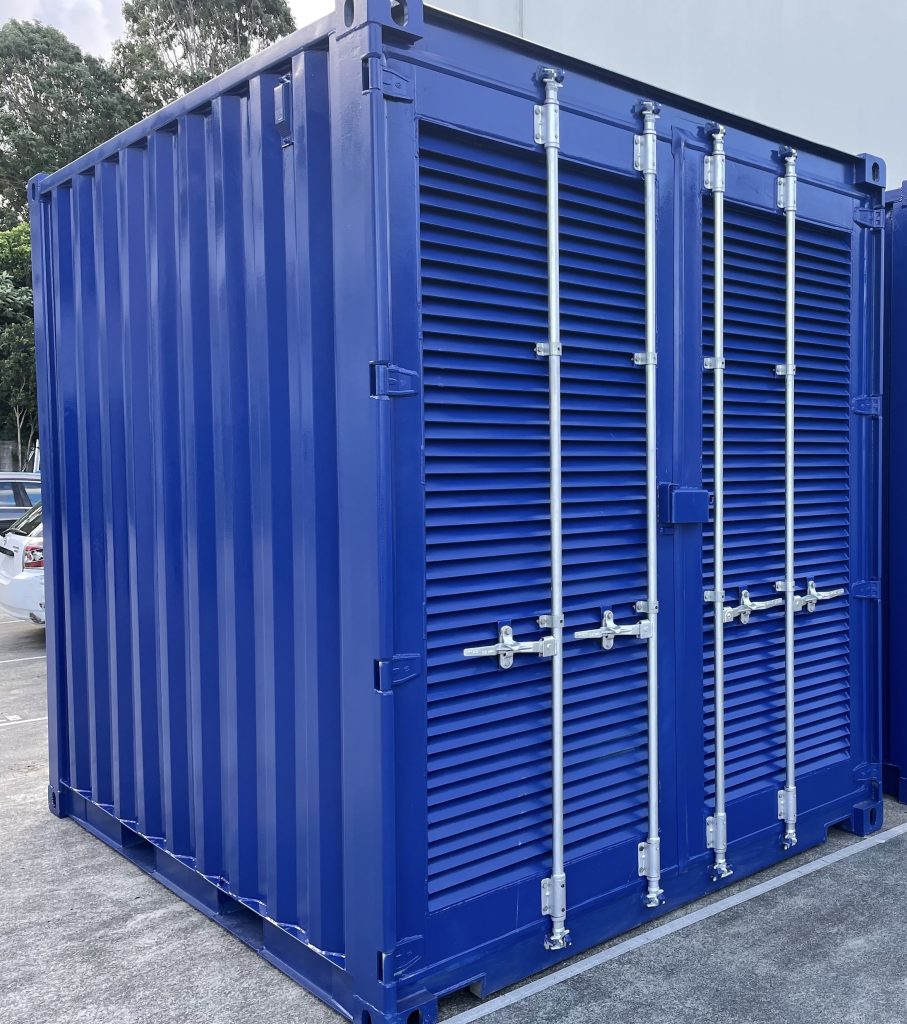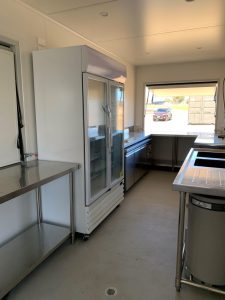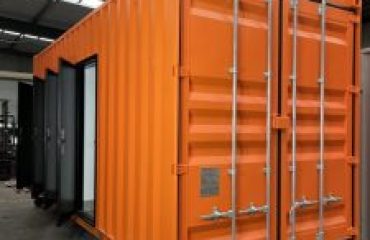
Shipping Container Ventilation Guide: In-Depth Tips for Optimal Airflow & Longevity
Ventilation is not just nice to have, it’s a long-term necessity to maintain the functionality of your shipping container/s.
In this article, we’ll take a deep dive into why proper ventilation is essential, how it can save you money in the long run, and the best practices you can implement today.
Understanding container ventilation will help you protect your investment whether you’re using containers for shipping, storage, or repurposing them into offices or living spaces.
Table of Contents
Why Ventilation is Critical for Shipping Containers
Understanding the Risks of Poor Ventilation
Best Practices for Container Ventilation
Innovative Ventilation Solutions
Expert Tips from Gatehouse Containers
Case Studies: Real-World Applications
Why Ventilation is Critical for Shipping Containers
Shipping containers are built to be robust, but even the toughest metal structures need proper care to perform well over time. Here are some reasons why ventilation is critical:
• Moisture Control: Containers, anywhere in Australia, are exposed to weather extremes. Rain, humidity, and temperature changes can cause moisture to accumulate inside the container, leading to rust, corrosion, and mould.
• Prevention of Condensation: Rapid temperature fluctuations can result in condensation inside the container. The container’s internal structures can be negatively impacted by this condensation, as well as the contents stored inside.
• Temperature Regulation: Good ventilation helps maintain a more stable internal temperature, reducing the risks of overheating or excessive cooling, which can affect both the container’s integrity and the quality of stored goods.
• Enhanced Longevity: By reducing the harmful effects of moisture and condensation, proper ventilation extends the life of the container, providing long-term cost savings and ensuring that your assets can be properly protected.
The above points underscore the importance of taking proactive measures to ensure proper airflow and moisture management within your containers.
Understanding the Risks of Poor Ventilation
Neglecting proper ventilation can have serious repercussions. Let’s break down some of the major risks associated with poor container ventilation:
1. Structural Damage
Without adequate airflow, moisture could damage the structural materials inside the container. Over time, this can lead to the need for costly repairs to maintain the integrity of the affected structural components.
2. Damage to Stored Goods
Poor ventilation can result in spoiled or damaged goods. Food items, electronics, and other sensitive materials can be especially vulnerable to the effects of damp, humid conditions. This not only leads to financial loss but can also harm a business’s reputation.
3. Increased Maintenance Costs
Containers with inadequate ventilation will need more frequent maintenance and repairs. It makes better economical sense for any long-term plans, to invest in proper ventilation solutions from the outset.
4. Safety Hazards
In some cases, poor ventilation can lead to hazardous conditions, such as the growth of mould or the accumulation of harmful gases, particularly if the container is repurposed for living or working spaces. Ensuring proper airflow helps mitigate these risks and keeps environments safe.
Best Practices for Shipping Container Ventilation
Implementing effective ventilation strategies can dramatically improve the performance and longevity of your shipping containers. Here are some best practices to consider:
1. Assess Your Environment
Before implementing any ventilation solution, it’s important to consider the container’s location and usage:
• Climate Considerations: Containers in coastal or humid regions may require more robust ventilation systems.
• Usage Patterns: A container used for long-term storage might need different ventilation compared to one that is frequently opened and closed for shipping purposes.
2. Install Appropriate Ventilation Systems
Different applications may call for different types of ventilation:

• Passive Vents: These allow for natural airflow and are generally low-maintenance. They’re ideal for environments where power sources are limited.
• Mechanical Ventilation: For higher-demand situations, installing fans or mechanical systems can ensure a steady flow of air. This is especially useful for containers storing goods sensitive to temperature and humidity changes.
For robust and tailored solutions, please see our Vented Plant Shipping Containers page. These containers are engineered to provide superior airflow, even under challenging conditions.
3. Regular Maintenance is Key
Even the best ventilation systems require regular upkeep:
• Clean Vents Regularly: Dust, debris, or corrosion can block airflow. Regular cleaning ensures that vents perform optimally.
• Inspect for Damage: Periodically check for any signs of rust, wear, or blockage, and address issues immediately to prevent further damage.
4. Utilise Advanced Technologies
Modern container designs incorporate innovative features that enhance ventilation:
• Adjustable Vents: These allow you to control the amount of airflow based on current needs.
• Moisture-Resistant Coatings: These coatings help protect the container’s interior from the effects of humidity and moisture buildup.
Innovative Ventilation Solutions
The shipping container industry has evolved, and with it, so have the solutions available for effective ventilation. Here are some of the latest trends and innovations:
Integrated Ventilation Systems
Newer container models are being designed with built-in ventilation systems that seamlessly integrate into the container’s structure. These systems offer several advantages:
• Energy Efficiency: Built-in fans and ventilation channels are designed to work efficiently with minimal energy consumption.
• Customisable Airflow: Many integrated systems allow for adjustable settings, enabling users to fine-tune the ventilation according to specific environmental conditions.
Smart Ventilation Controls
With the advent of IoT (Internet of Things) technology, some modern containers now come with smart ventilation controls:
• Remote Monitoring: These systems can be monitored and controlled remotely, ensuring that your containers are always operating under optimal conditions.
• Automated Adjustments: Smart systems can adjust ventilation based on real-time data, such as temperature and humidity levels, providing a dynamic solution that adapts to changing conditions.
Eco-Friendly Solutions
Sustainability is an increasingly important consideration in container design:
• Solar-Powered Fans: Some containers now feature solar panels that power ventilation fans, offering an eco-friendly alternative to traditional mechanical systems.
• Recyclable Materials: Manufacturers are also focusing on using sustainable and recyclable materials in the construction of containers, reducing environmental impact while maintaining high performance.

Expert Tips from Gatehouse Container Modifications
At Gatehouse Containers, we’re passionate about helping our customers maximise the performance and longevity of their shipping containers.
Here are some insider tips from our experts in shipping container modifications:
Understand Your Specific Needs
Every container setup is unique. Spend time assessing your storage or shipping environment and consider factors such as climate, frequency of use, and the type of goods stored. A tailored approach to ventilation can yield the best results.
Invest in Quality Solutions
While budget constraints are always a consideration, investing in high-quality ventilation systems can save you money in the long run by reducing maintenance and repair costs. Our Vented Plant Shipping Containers are a testament to this philosophy—they’re built to endure tough environments while ensuring optimal airflow.
Regular Monitoring and Upkeep
Set up a schedule for regular inspections and maintenance. This proactive approach will help you catch potential issues early, ensuring that your ventilation system—and your container—remains in top condition.
Don’t Hesitate to Ask for Help
Our friendly team is here to provide expert advice and personalised solutions. Whether you have questions about the best ventilation system for your needs or require guidance on maintenance practices, don’t hesitate to reach out. Our experience in the industry means we’re well-equipped to help you overcome any challenges.
Case Studies: Real-World Applications
To illustrate the importance of proper ventilation, let’s look at a couple of real-world examples:
Case Study 1: Coastal Storage Solution
A business operating near the coast faced frequent issues with rust and corrosion due to high humidity and the salty air. After installing passive vents combined with regular cleaning routines, the company saw a significant reduction in maintenance costs. The enhanced airflow helped mitigate moisture buildup, preserving both the container and the stored products.
Case Study 2: Urban Office Conversion
Shipping containers were converted into an urban office space for an entrepreneur. Initially, the space suffered from condensation issues, particularly during seasonal temperature fluctuations. By integrating a smart ventilation system that included remote monitoring and automated adjustments, the business owner was able to maintain a comfortable, stable environment year-round, ensuring productivity and a pleasant workspace.
Final Thoughts and Next Steps
Proper ventilation is essential for maintaining the integrity and functionality of shipping containers. By following the best practices outlined in this guide, you can reduce the risk of moisture-related damage, protect stored goods, and ultimately extend the lifespan of your containers.
Remember, investing in quality ventilation solutions like our Vented Plant Shipping Containers not only safeguards your assets but also contributes to long-term cost savings. With regular maintenance and a proactive approach, your shipping containers will serve you reliably, no matter the conditions.
What’s Next?
• Assess Your Current Setup: Take a close look at your existing container ventilation. Are there any areas where airflow could be improved?
• Explore Advanced Options: Consider upgrading to integrated or smart ventilation systems if your current solutions are outdated.
• Reach Out to the Experts: If you need personalised advice, our team at Gatehouse Containers is always ready to help.
Visit our Contact page to get in touch with us today.
We trust that reading our in-depth Shipping Containers Ventilation Guide has provided you with valuable insights and practical tips to help you make informed decisions about your container ventilation strategy. For more expert advice and innovative solutions, stay tuned to our blog and follow us on social media.
Why Gatehouse Container Modifications?
Gatehouse Container Modifications has built its reputation on providing shipping containers that align with the goals of businesses all around Australia.
We also provide expert guidance that will make sure you get the container most suited to your needs. Our friendly team is ready to advise on all aspects, including Australian standards compliance, size, dimensions, and ventilation.




